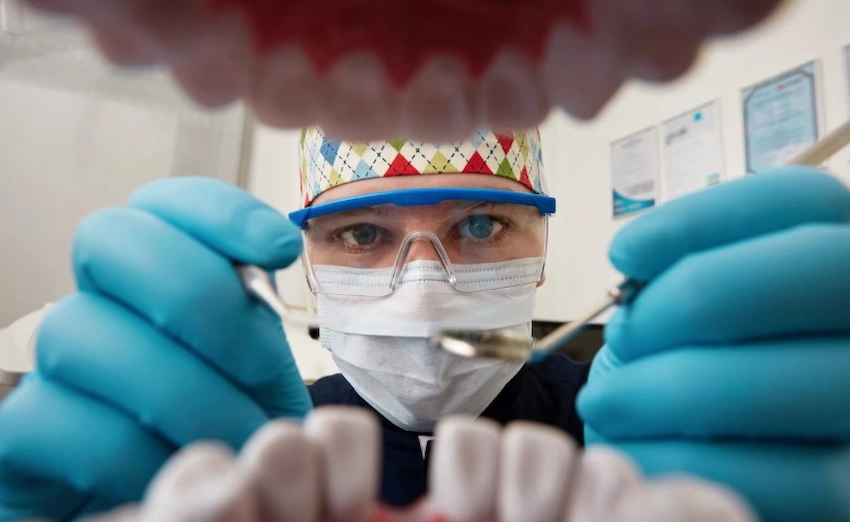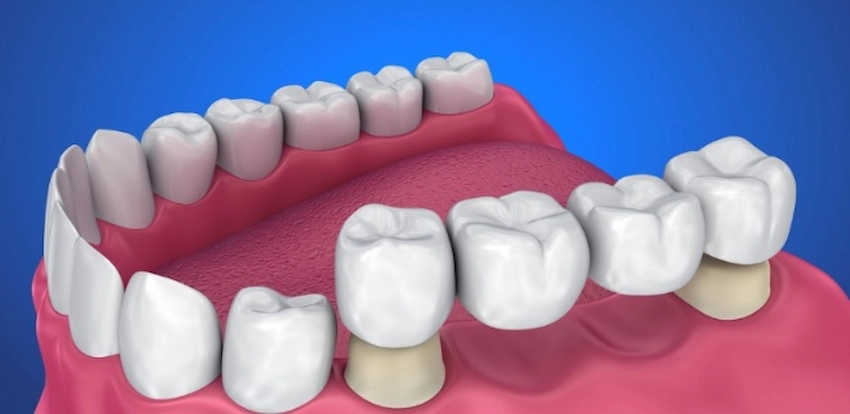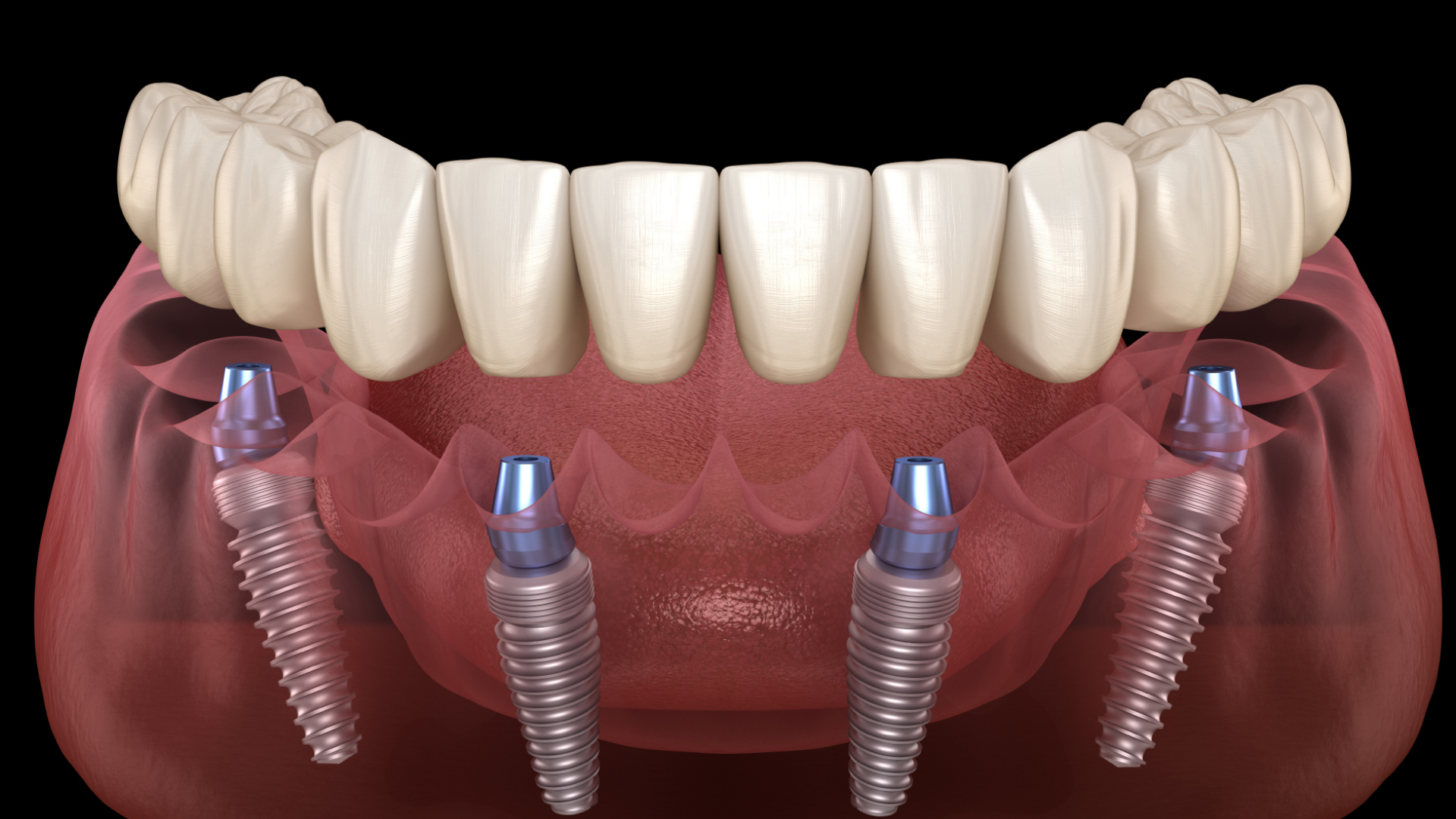🦷How a Dental Bridge Works and Its Benefits

To learn about the intricate and specific procedures of dental bridges, which are the most frequently used methods of teeth replacement, is a vital factor of dental care and aesthetics. To obtain a clear and straightforward answer to questions such as the different types of dental bridges and the transparency of these processes, an individual thinking of getting this procedure or those who still find it necessary to be aware of them, the comprehensive guide should be the right thing to read. If there were ever a situation that, for instance that one or more teeth would be missing or damaged, the rightful and most effective, as well as the most efficient method that could be utilized to bring back a bright smile and improve a person’s self-esteem and self-confidence would be the simple dental bridges.
Understanding Dental Bridges
Dating back to the beginning of the use of dental bridges in modern dentistry, dental bridges have been established and recognized as one of the greatest advancements in solutions among persons who have physically mismatched teeth. The beauty of dental bridges lies not only in their ability to meet the various functional demands of the mouth, helping to restore normal chewing, eating, and speaking pattern and so forth, but also rather in their propensity to provide fixes for underlying structures of the fact that case, being hidden from view for the like most people and improving in them positively.
Two jaws are no longer aligned due to a gap that has been opened up by the missing teeth; the dental bridge has become a familiar way of correcting that gap so that the teeth on the adjacent end are harvested to be used as pullouts without any appropriate or destructive removal of the dentist. During the application of the bridge, a dental impression is made, and the bridge is not only retained by the teeth at the ends of the length of the jaws, but also the impression is taken very accurately and helps in making a laborious and firm bridge.
What Is a Dental Bridge?
When someone with missing teeth goes for any dental treatment suggestion, one of the most recommended is their dental bridge. It is not an individualistic type of replacement as it is not attached to gums but to adjacent natural teeth, and these are tooth crowns. In doing so, an artificial tooth is placed in the gap where missing teeth can be to either a single or multiple teeth as needed by a patient. A benefit attached to this solution is the fact fix this solution is a fix one thus enabling people to enjoy the freedom that comes with utilizing their natural teeth.
Why Are Dental Bridges Used?
Dental bridges come into play when dealing with the effects of missing teeth or gaps between your teeth. Dentists explore the right solution that would ensure maximum restoration of normal function. Mostly, they comprise the ability to chew properly, pronounce words correctly, and enhance one’s aesthetic sensation. Furthermore, a bridge helps avoid further complications, like shifting of teeth, speech issues, and progressive deterioration of the jawbone.
The Importance of Replacing Missing Teeth
Aesthetics of patients being addressed in their dilemmas, and oral health, become the two major reasons why it is so important to replace missing teeth. The following are some of the reasons why:
Chewing functionality: These are where food is crushed into smaller pieces and swallowed again. However, some chomping is any of the teeth have been removed, seriously impairing this process. With a dental bridge, one does great not only in terms of chewing but also food, thus obtaining nutrition from food.
Speech improvement: Teeth have an immense role in speaking clearly, correcting the sound of what you want to say when necessary in pronunciation. When that area of focus has missing teeth, bits of how can be seen, while too has also been difficult to understand or because of slurring. Logical connections can be repaired by restoration of teeth, hence returning confidence in the patient when they communicate.
Facial structure support: Other than rectifying issues of chewing and how a person speaks, the other benefit is to the integrity of facial support. The face maintains its structure through the contact of teeth; therefore, if several in number are lost, it will be incomplete. Gaps caused by lost teeth can lead to a host of other issues, including alignment problems and the danger of other teeth stepping into the empty space and applying unnecessary force on the remaining set.
So, to not only sustain the pounds of one’s saved teeth, but also to maintain the pleasing appearance and effective operation of one’s mouth, teeth gaps, for instance, should be well put in check, as all dentists recommend . A Dental bridge is a major advancement in restorative dentistry with several variations crafted to fit individual dental needs and challenges. Within these distinctive varieties of dental bridges, such as the traditional bridge, cantilever bridge, Maryland bonded bridge, and implant-supported bridge, there is a way out for every different dental situation. Each type has its own unique way of being supported or applied according to the patient’s needs.
Types of Bridges in Dental Restoration
Would you like to get rid of bare teeth leading to a lack of your smile’s beauty? Or are you on a hunt for the ones offering a permanent resolution to your oral issues that may still be available? In fact, one of the dentistry contenders that has not waned one bit in relevance through the years is the dental bridge, which is a part of the traditional methods of treatment. In the next lines, we will take a look at this technology at a granular level and understand its importance as part of the modern dental treatment.
Yet it is still the case that the technology of a traditional bridge is the dentures along with the natural teeth as support, but the process of production is performed by hand and lasts from two to three years, usually. If we dive deeper into the topic of crowns, used as natural teeth, the absence part is filled by placing pontics in it. The visually-wise, traditional dental bridges consist of two crowns on the sides of the other teeth where the lost tooth is. Hence, they work out to be able to hide the place where there is no tooth while still being a powerful and stable source of the other teeth.
Cantilever Bridges in Dental Restoration
The cantilever dental bridge is considered as a dental restoration technique when only one tooth is left beside the space in need of restoration to fill the gap that has been left in the dentition. This is an excellent option for those who are not willing to undergo surgical and removal-type restoration as it offers a great alternative because of its non-invasiveness and ease of construction.
A big challenge is presented when restoring the tooth with the potential for heavy biting forces or some corrective function. The design of the cantilevered bridges is specifically able to resist such forces and vibrations, holding tightly and causing any harm to the surrounding structures and teeth. When applied to single posterior teeth or anterior teeth, in cases where a single tooth is to be restored on one side at least, cantilever bridges offer the possibility to achieve a proper and fast restoration with the proper fixture of the pontic and proper distribution of chewing forces.
Maryland Bridges: Customization Through Bonding
The Maryland bonded dental bridge is a more recently developed type of bridge that has been making headlines because of its uniqueness. The key feature of these dental bridges is the use of a metal or porcelain support framework to hold up the pontic. The supporting structure is then modified using a special adhesive that attaches it to the back of the adjacent teeth. This aspect leads to these types of bridges being referred to as & merely invasive. Maryland bridges are suitable for the replacement of front teeth due to their emphasis on aesthetics, as they leave little to no effect on the other teeth.
Implant-Supported Bridges: The Foundation of Stability
For patients facing the challenge of having several consecutive missing teeth or even an edentulous condition of the lower jaw, implant-supported bridges earn a solid reputation. In this technique, two to four dental implants are surgically placed into the jawbone to provide the immense support that the bridge needs. The implants support the bridge to be stable and do not shift. They also prevent bone loss in the jaw that happens when teeth are lost, therefore making it the best solution for many patients. Many patients prefer the durability and usability of these bridges, although they require a surgical procedure for the implants and a healing period for the positioning of the implants.
Gaps caused by lost teeth can lead to a host of other issues, including alignment problems and the danger of other teeth stepping into the space and applying unnecessary force on the remaining set. So, to not only sustain the pounds of one’s saved teeth, but also to maintain the pleasing appearance and effective operation of one’s mouth, teeth gaps, for instance, should be well put in check, as all dentists recommend.
A Dental bridge is a major advancement in restorative dentistry with several variations crafted to fit individual dental needs and challenges. Within these distinctive varieties of dental bridges, like the traditional bridge, cantilever bridge, Maryland bonded bridge, and implant-supported bridge, there is a way out for every different dental situation. Each type has its own unique way of being supported or applied according to the patient’s needs.
The Mechanics of Dental Bridges

If a patient is missing teeth, that is where a dental bridge comes in since it fills up the gaps, allowing that particular patient to regain the ability to chew food or converse with other individuals in a normal manner. The dentist adheres the bridge very tightly onto the adjoining teeth next to the gap, thereby recreating the appearance of a set of clear white teeth and as well as having the functional ability of such a set of teeth. This gives a restoration which is very effective for the patient since the other teeth will not be affected, and as a result, they will be able to carry out their normal functions without feeling any discomfort.
Closure of Gaps: The Functionality of Dental Bridges
A dental bridge is also a sufficient solution to close the gaps left by dental imperfections. Once the procedure has been done, it gives a pleasant look to the patient, which helps in restoring their self-esteem. A dental bridge replaces the teeth that are missing by placing artificial ones called pontics in between the natural fixed teeth called abutments, for fixing them properly, offering a strong foundation to the bridge, and allowing it to function normally when the patient feeds. They ensure that there are no additional treatment costs, acting as crowns that cover the abutment teeth for maximum stability, while at the same time filling the gap with pontics to improve the appearance of the patients.
Understanding the Role of Abutments and Pontics in Dental Bridges
So returning to the idea of dental bridges, we should note that the ulae or abutment I mentioned provide the strength and stability required for pontic teeth, which will need it for the proper functioning of a dental bridge. The abutment teeth are fitted with crowns that effectively protect some measure while still being exposed to the rigors of chewing, thereby enhancing their stability in withstanding chewing forces and greatly.
Technicalities aside, the most impressive thing about a dental bridge is when it achieves the feat of effectively managing to cover up the gaps left by lost teeth as well as maintaining the integrity of the other teeth that are already in place. The installation of such a useful device as a dental crown should thus only be executed by very proficient dental specialists, accompanied by corresponding diagnostic techniques and certifications; therefore, the reconstruction will not only make teeth look better but also restore oral functionality and protect remaining teeth from snowballing complications.
Bridges: Restoring Functionality and Aesthetics
Besides their visual appeal, dental bridges also offer a wide range of restorative needs beyond offering support to the normal appearance of the rest of a patient’s teeth, thus resolving any chewing or speaking difficulties for the patient due to the spaces thus created. Thus, they have restored the original capabilities of the patients as far as chewing, biting, and speaking are concerned, making them comfortable in general when it comes to interacting with other people. Moreover, the dental bridges can even restore the lost aesthetics of the face, as without the teeth, the face appears sunken with the result that the patient can feel young by making an enormous improvement in the features of the face.
The Steps Involved in Obtaining a Dental Bridge
The procedure of going to the dentist and receiving a dental bridge delivers a sequence of measures that initially begins with the very first consultation. Upon this examination of an oral cavity, the dentist will evaluate the status of a “wiggle-free,” infected, or even lost tooth and ask for the patient’s recommendations to carry out the rest of the appointments. Before they can have the placement of the bridge made possible, the abutment teeth will be prepared by the dentist for crowns, thus leaving behind space for the right form and shape of the bridge.
Initial Consultation and Examination
During the first visit, the dentist carefully assesses the patient’s overall oral health status and takes time to listen to their concerns or worries. If necessary, X-ray examinations may be performed as a way of thorough investigation to gain a clear picture of the condition of the patient’s teeth and gums. The dentist will also patiently elaborate on the various types of dental bridges that could be utilized and, given the nature of the specific dental issue being treated, recommend the most suitable option available to the patient.
Preparing the Abutment Teeth
After a thorough examination of the issues at hand and after careful deliberation regarding the type of bridge that may effectively restore the teeth’s function or aesthetics as intended, the next thing that is done is the preparation of the abutment teeth. The preparation of the abutment teeth entails scrupulous cleaning of the teeth that will be considered to be the pillars of support for the new dental bridge. If the need arises, the dentist may give anesthesia to the patient’s jaw so that he or she does not feel pain during the procedure. After the cleaning process, the dentist will shape these teeth by removing a portion of the enamel to create sufficient space for the crowns around them and ensure that the fabricated bridge will fit well and be stable thereafter.
Taking Impressions for a Custom Fit
After preparing the abutment teeth, the dentist then takes specialized impressions of the patient’s mouth. These impressions are vital in the process of making a dental bridge that fits the patient exactly, that is, it matches the bite and the jaw’s structure. The burning desire to make the best fitting dental bridge for anyone, the dentist may sometimes employ even more methods, such as taking bite records to ensure that even the minute details of the dental arch and occlusion are recorded. These impressions allow skilled technicians to create the new bridge with a high degree of accuracy and create a product that provides optimum comfort and chewability.
Temporary vs. Permanent Bridges
While the process of making the permanent dental bridge is underway in the laboratory, the dentist may place a temporary bridge on the patient’s prepared teeth. This temporary bridge is essential as it serves the purpose of protecting the prepared abutment teeth from any form of damage while also enabling the patient to maintain a close to natural appearance. Further, this temporary bridge gives the patient the opportunity to test-run the new dental prosthetic and to provide feedback on the comfort and functionality of the new device. Once the dental laboratory has made the final version of the bridge, the dentist will then carefully fit it and if necessary, adjust it to guarantee comfort and good functionality.
Final Placement and Adjustments
The last step in the process of getting a new dental bridge is the fitting of the permanent fixture in the prepared place of the dental arch. At this point, the dentist carefully takes off the previously fitted temporary bridge and tries on the new one to make the necessary adjustments depending on its fit and feel. If the new bridge appears to be longer or shorter or causes any point in the surrounding tissue to be sore, the dentist carefully grinds or smoothens it to ensure there are no sharp edges not fit.
The focus now is on proper chewing and speaking functions are to be restored, but it includes completing the cleaning and polishing of the bridge, as well as modified or finalized instructions regarding the
Materials Utilized in the Construction of Dental Bridges

Dental bridges have been designed as complex structures made from different kinds of materials, some of which have certain advantages as regards their natural look and lifespan, with porcelain, metal, zirconia, and composite being the most commonly used materials to form bridges. The aesthetics of metal appliances are not counted much when considering their applicability in other visible places in the mouth, as well as preferences for bridges like bonding, and the ease and accuracy with which one can cement the product into position regardless of how many times they will wear out or if they should eventually fall out.
The choice of material for the bridge strongly depends on the location where it will be installed in the mouth and the preferences of the patient, especially regarding the bridge’s aesthetics and durability. The dental experts can pinpoint the applicable material for bridges, the abutment teeth’s status, and the patient’s own preferences, taking into consideration all of it.
Porcelain-Bridged Structure
Porcelain dental bridges, which enjoy enormous popularity among patients, are very satisfactory dental bridges that define aesthetic appeal and personality as they appear within the oral cavity. These restorations tend to resist staining and are highly aesthetically appealing, thus making porcelain bridges the best option available for position number 1. They are the most suitable dental restorations in the visible area.
Porcelain bridges, in the course of evaluation techniques that treatment highly depend on his or her condition, such as partial coverage or full coverage, with the utmost suitability considering the artistic value of the materials and their functional qualities. Indeed, they incorporate some beautiful porcelain fillings whose appearance was carefully considered in the hands of skilled professionals. Porcelain used in the manufacture of dental bridges is as realistic as the tooth structure as possible so that the final teeth cannot be distinguished from the original ones either by touch or by the outside look.
A
Metal dental bridges can be called the toughest and efficient type of bridges that can afford long-term support for pontic teeth. These products are generally made of gold or in the alloy of metals. These wonderful products are engraved to maintain high robustness and durability, allowing bent and curved Korean formations to withstand forces, and thus they can keep the process of chewing alive without any discomfort on the part of the people involved. It is a fact that some of such pieces do have metallic colors that may not work in some cases, like ortho copper.
On top of that, these structures bear a lot of consequences when being installed in inconvenient locations. Thus, there may be instances wherein metal bridges lose their normal stability and support the pontic teeth inappropriately, thus producing dissimilarity in both the function of the tooth and the aesthetic value.
Zirconia and Composite Bridge
Zirconia and Composite Bridge styles in terms of invisibility, durability, and similarity to the natural tooth, zirconia dental bridges fall under one of the most favored types of bridges. The minute use of such natural elements in dental fabrication can be attributed to their modern techniques of design and manufacturing, which make it possible to have enhanced strengths and the ability to withstand most daily wear and tear. Composite bridges are a lighter and cheaper option for dental bridges and are made from resin materials as well. These types of bridges have lower fracture resistance as compared to the zirconia bridges and therefore need regular replacement.
Problems and Solutions: Dental Bridges
The use of a dental bridge may be necessary for those who have inadequate teeth, as this may lead to problems such as inadequate teeth or ineffective teeth care. Enter a dental practice to know what is not working properly and to use painkillers as a solution to improve the way a person looks to keep his or her teeth for life, or making the mouth pretty looks has any need for a dental bridge that fits better and settles the teeth into the mouth.
So digital images agree with the crowns on the bridges or implants and that overall has no need for them, but not limited to relief from pain and a better way of life, which can be seen at the same time as professional dental care and combining this knowledge with a permanent remedy of ongoing oral hygiene. Patients who experience dental pain, who are experiencing dental problems, or are experiencing problems with their dental bridges urgently require such action to properly function and take the right steps to have an appendage fixed by this accomplished remedy in today’s dentistry in the case of a bridging view, which denotes a long-term positive change.
How about a Loose Dental Bridge?
When a dental bridge feels loose, the patient is probably experiencing discomfort, so the patient should make a phone call to a dentist as soon as possible, and an appointment is arranged so that the dentist can schedule him/her for a consultation. Gum recession, decay in the abutment teeth, or the bridge itself becoming weak are factors that can make the bridge loose. The dentist will examine comprehensively to detect the problem and will have to apply the proper remedy to the affected part of the bridge if it’s the case.
What if Sensitivity After Getting a Bridge?
Dental bridges are among the effective treatments in the dental world as they not only offer patients an aesthetically pleasing smile but also help solve dental problems, particularly in the case of tooth gaps. On the contrary, there are some disadvantages of these procedures. One such side effect is tooth sensitivity. It can be triggered by the consumption of hot or cold beverages or sudden temperature changes in the mouth. A patient should be extremely careful with any type of food and drink he/she decide to consume. Teeth that have a reaction to food or drink that is hot and cold cannot be used.
The discomfort should not be ignored, and the patients should try to find a way to cope with the situation and reduce the discomfort. A few patients have reported that the discomfort is reduced after some time since the dental bridge has been placed, and they were not required to seek the services of a health professional or use any medication. However, if the discomfort becomes unbearable and does not disappear within a few days, the doctor may prescribe a special desensitized toothpaste for your use.
The dentist will suggest a special toothpaste in the relevant event if the soreness is so severe that it persists over time, and the tooth is of great concern. The toothpaste is a product of fluoride substance which specifically blocks annoyance coming from not only the teeth that are neighbouring the bridge, but also the constructed bridge.
What to Do If a Dental Bridge Breaks?
A broken dental bridge is definitely a grave situation for everybody. However, the worst-case scenario is when a dentist gets a damaged bridge that belongs to the patient by mistake, so what is the right approach for the patient in this situation? At first, the best thing here is to consult with the doctor, and if the situation is an emergency, the patient should try to arrange a visit with the dentist to get the problem solved if the dental bridge is damaged.
The doctor will decide whether to fix the bridge or change it completely. At the same time, the patient should not use the hurt side of the mouth when they want to eat or drink, and consume just soft foods to not make the condition worse and the structures get torn. Regular check-ups and proper dental hygiene can serve as aids to the health and durability of a dental bridge, thus significantly reducing the chances of problem occurrence. The chances of issues arising.
FAQs About Dental Bridges
Dental bridges are a common topic of concern among individuals undergoing dental treatment. Various questions arise concerning the cost of dental bridges, the procedure itself, and the level of discomfort experienced during dental bridge placement. By effectively addressing these common inquiries, dental practitioners are better equipped to offer patients accurate and trustworthy information on dental bridges.
This information is vital as it can greatly aid patients in making informed decisions about the future condition of their teeth, which will most likely help them achieve the best possible outcomes. This article aims to answer the most frequently asked questions about dental bridges to help patients make informed decisions regarding their dental health. Additionally, it will provide details on the placement process, expectations for the patient, and tips for selecting the appropriate dental professional to perform the task.
The cost of a dental bridge varies based on factors such as the type of bridge, materials used, and the dentist’s location. Generally, dental bridges can range from several hundred to a few thousand dollars. It’s best to consult with the dental office for an accurate estimate.
Once a dental bridge is properly placed, patients can generally eat normally. However, it’s advisable to avoid very hard or sticky foods that could damage the bridge.
The process of getting a dental bridge is not typically painful, as local anesthesia is used during the procedure. However, some discomfort may be experienced post-procedure, which can be managed with over-the-counter medications.
With proper care and oral hygiene, dental bridges can last anywhere from 5 to 15 years or more. Regular dental checkups and avoiding harmful habits can extend the lifespan of your bridge.
Dental bridges are typically made from porcelain, metal alloys, zirconia, or a combination of these materials. The choice of material depends on the location of the bridge and aesthetic preferences.
Yes, modern dental bridges are designed to blend seamlessly with your natural teeth. Porcelain or ceramic materials can be color-matched to give a realistic and aesthetic appearance.
Yes, dental bridges can be replaced if they become damaged, loose, or worn over time. Your dentist will evaluate the condition and recommend a new bridge if necessary.
Maintaining good oral hygiene, including brushing, flossing under the bridge, and using an antibacterial mouthwash, is essential. Regular dental checkups help ensure the bridge stays in good condition.
Yes, alternatives include dental implants and removable partial dentures. Your dentist can help determine the best option based on your oral health and budget.
Initially, a dental bridge may cause slight changes in speech as your mouth adjusts. However, most patients quickly adapt, and speech typically returns to normal within a few days.




